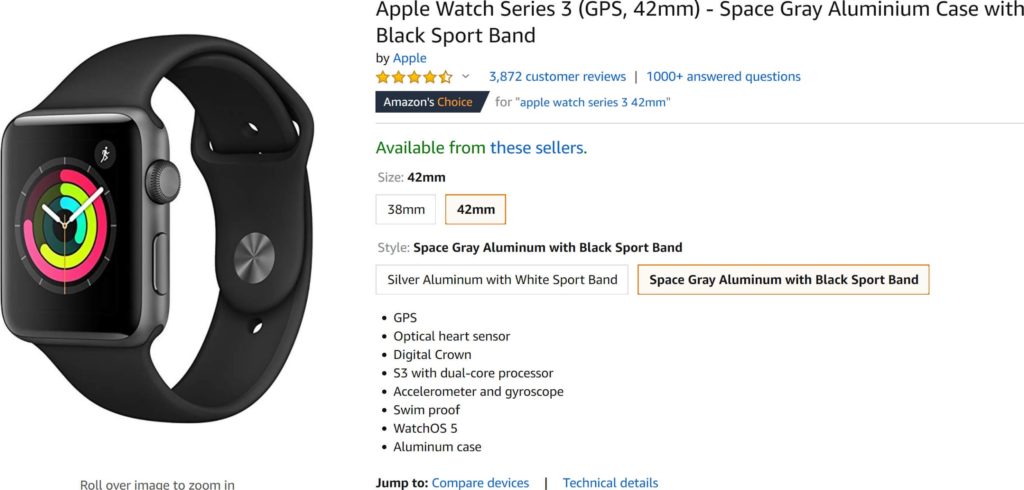Some businesses are deeply deceptive, using questionable tactics to get ahead. Others commit to operating ethically and always aim for honesty.
However, no matter how you run yours, you’ll run up against skepticism. People simply find it hard to trust brands. Can you blame them?
This is certainly frustrating, though. Particularly when you’re telling the truth!
A legitimate argument in your favor can be dismissed offhand. How can you succeed when people won’t believe anything you say? The answer is simple: you turn to User Generated Content (UGC).
UGC consists of anything created by your customers (or followers). Common examples include reviews, testimonials, competition entries, social comments, and blog posts.
Consider that your brand is fundamentally biased and might make exaggerated claims. UGC, meanwhile, comes from people who are, in principle, unbiased.
Here is a video by GoDaddy that will help you learn more about UGC:
User Generated Content is so powerful because it’s easy to believe.
If you want to sell more, you should be using UGC. That’s easier said than done, of course — how can you manage it? In this post, we’re going to look at some key tactics.
Here are 5 smart ways in which you can use UGC effectively:
No business of any decent size gets perfect feedback all the time. Look at any high-end company and you might see a 4.8 aggregate rating – but not a full 5.
Even if you do everything right, you’ll get imperfect ratings from unreasonable customers.
Maybe someone had a bad day and they blamed you for it. Perhaps the courier messed up and you took the flak for it.

Above, you can see a shining example of this. Consider that Apple is world-renowned for the quality of its hardware. Its Series 3 Apple Watch currently has almost 4000 reviews on Amazon.
The aggregate rating? 4.5. If it weren’t for the review system, it would probably be higher. It still wouldn’t be 5, though. It’s never going to be 5.
This might sound frustrating, but it’s actually a good thing. There are two big reasons for this.
Firstly, shoppers don’t believe perfect ratings. They assume they’ve been artificially sweetened, with all the criticism removed (after all, it isn’t hard to simply delete negative reviews). When they see critical comments, it makes the positive ones more believable.
Secondly, a negative review is a superb opportunity for your brand. Here’s why: it’s easy to accept praise, but hard to take criticism.
Don’t just accept the negativity — engage with it.
Talk to the reviewer and figure out what happened. They’ll appreciate the effort, and you might be able to resolve their issue.
If so, that person might go from a critic to a supporter.
People don’t typically buy from brands due to their prices or quality. While those things matter, they want to associate with brands they like.
They look for brands that share their values.
Companies that have goals similar to theirs. A recurring theme with such brands is a willingness to change.
They listen to their customers and value their suggestions.
A great UGC tactic, then, is to create social media votes. What should your followers vote on? Try offering up some notable tweaks to your operation. Use things that aren’t major changes but aren’t trivial either.
How about an update to your product line? A refreshed version of your logo? A revised corporate slogan to reflect modern values?
You can use the poll functions built into social media platforms. Alternatively, you can use a free tool like Poll Junkie. You can approach it however you prefer.
Pick the approach that has the right combination of features and options. Be careful with this, though. Don’t put something to a vote if you won’t accept the answer.

Here’s a great example of this: the Starbucks White Cup Contest back in 2014.
The company invited its followers to submit their cup designs, and almost 4000 entries later, it picked a submission and made it available as a limited edition reusable cup (see above).
It didn’t significantly affect the company’s fortunes (it was just a cup, after all), but it was a tangible sign of community interaction – and that’s not something to be overstated.
When people see that you’re taking input, it’ll improve your reputation. More of them will want to follow you and get involved.
They’ll start to think about how your company is changing. Isn’t it more fun to support a company that’s willing to adapt?
Standing out online has become really difficult in recent years. People are spoiled for choice. In truth, there’s so much content around that it all blurs together.
You can do really interesting things online and they can go unnoticed. This is why there’s been a resurgence in offline marketing.
When you appear at a real-world event, you can get direct attention.
Consider the growing popularity of the temporary pop-up shop. Think of it as hybrid retail: using online tech with offline tactics. Portable point-of-sale systems can hook into online systems.
Some POS suites even provide compatible hardware (e.g. Shopify POS). Without needing conventional premises, online merchants can sell through mobile devices.
Now, you might wonder what this has to do with user generated content. Why would selling on the streets help there? Well, there are two reasons.
Firstly, it grants you access to ad-hoc opinions. An online review might be carefully considered for maximum impact. A misleading piece of feedback might be submitted solely for a reward.
But when asked in person, it’s harder for someone to deceive. That means you can get real sentiment about your brand – and you can use that.
Secondly, operating in public gets you attention. People particularly like sharing photos on social media. If you make your pop-up shop compelling, people will mention it online.
You can then comment on their posts (and add yours, naturally). It’ll be nice for your followers to see you working outside.
It’ll make you more relatable and show your hustle.
Back in 2016, BARK ran a week-long pop-up shop. It featured dog toys and treats, and (vitally) dogs to test them.
As a result, it picked up a lot of great attention. Who wouldn’t want to stop and play with some dogs? And who could resist taking some photos for social media?
Most prospective customers at an event won’t buy. They might seem interested throughout, but the proof is in the action.
Their feedback is valuable, then, but your ambassador have more to say. By ambassadors, I mean the customers you’ve helped and kept happy. You can use them to create some powerful interviews.
You first need to know who these people are. To manage that, keep a close eye on your social media accounts.
Look for the people who’ve left you great reviews and comments (you may already have some in a brand ambassador scheme). Once you’ve found some, reach out to ask about interviewing them.
You can offer some small incentive – just don’t go overboard. The goal is to share their happiness from working with you.
You can do this in text and add it to your blog. You can also record it for a podcast and/or video.
I suggest the latter, because video content is very potent and eye-catching. Ensure that they’re relaxed and comfortable.
Don’t require them to say anything in particular. They’re definitely positive about you, so let them tell the honest story.
Managed to inspire a lot of user generated content? You need to keep finding ways to derive value from it.
One such way is to collate it for your website. Take Instagram photos, for instance. If people post about your brand, show the posts on your website. This will ensure that visitors see your social media activity.
Plenty of people still avoid social media, so this shouldn’t be disregarded.

Take Under Armour as an example. On its homepage, it features the “SHOP OUR INSTAGRAM” section pictured above.
While it doesn’t exclusively feature user generated content, it has a lot of it. And seeing people using the brand’s equipment makes it look great.
You can also turn your UGC adventures into blog posts. Talk about your pop-up shop activities. Set out what you’ve learned from customer feedback.
Show appreciation for everything your followers and customers have done. You can then share those posts on social media.
This process (gathering and repackaging user generated content) is repeatable and highly useful.
Returning to the original point, this helps minimize your content. It’s such a boon to have a homepage full of customer endorsements. Visitors won’t need to decide if they believe you.
What’s more, you won’t have to spend time agonizing over your copy. The bulk of it will be dynamically based on user generated content. Why wouldn’t you want to try it?
Now that we’ve covered our 5 favorite tactics, but the truth is that every business is different. You should monitor your customers’ activity to find the best ways to interact with them to maximize your UGC efforts.
User generated content is immensely powerful, credible, and creatively engaging. Start encouraging people to create it. That way, you can trim your workload and see better results. What are you waiting for?
User-Generated Content (UGC) is any content that is created by customers, rather than brands. Brands often share this UGC on their own social media, website, and other marketing channels. More on User-Generated Content in the full article.
User-Generated Content is most often more effective and reliable than brand-generated content since customers trust their fellow peers way more than the brand. They take their work and are driven to purchase more easily. More on this in the complete guide.
User-Generated Content is important because it serves as a great social proof. Content from real customers instead of the brand itself increases credibility and increases customer trust. Read the full article for more details.